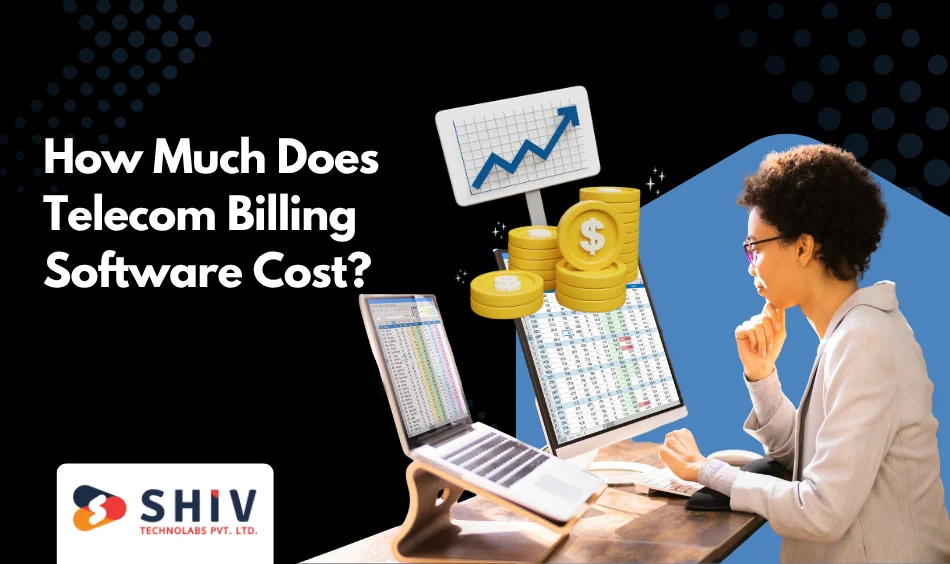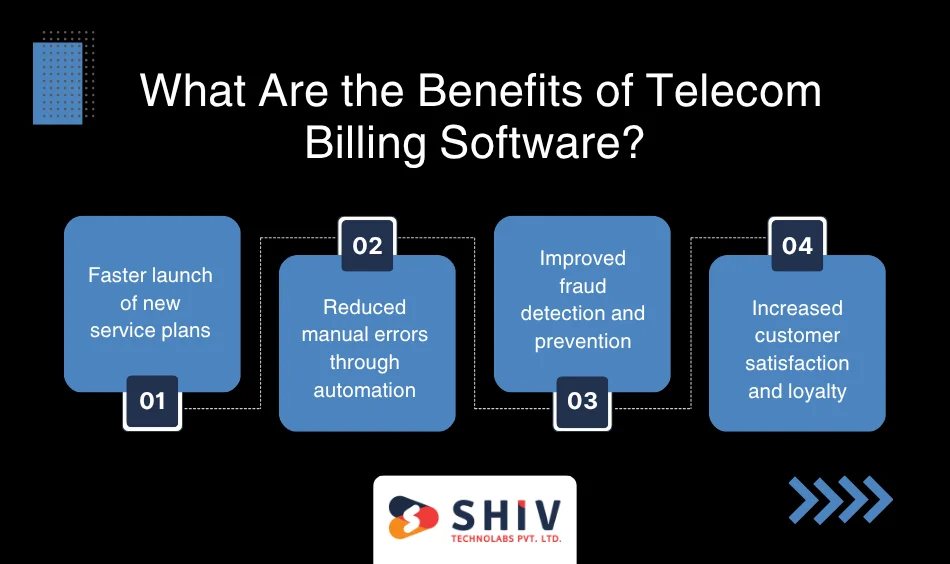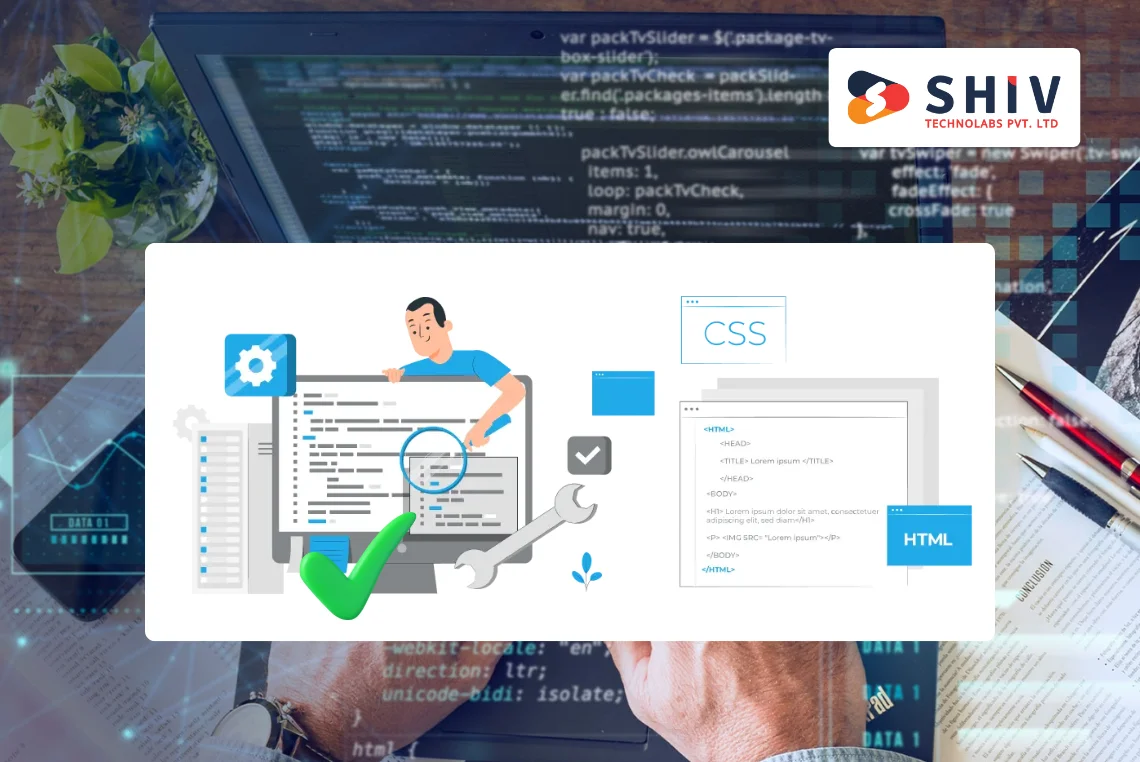Table of Contents
Telecom billing software records usage, applies rates and taxes, and produces clear invoices. Many operators choose Telecom Software Development Services to build rating engines, catalogs, and automated workflows that match growth targets. The same platform supports prepaid, postpaid, and convergent models without confusing customers or finance teams.
Strong telecom billing solutions strengthen revenue assurance with accurate mediation, credit control, and clear dispute workflows. Billing software for telecom companies improves retention through transparent statements, unified accounts, and timely bill notifications. Compliance features add audit trails, tax rules, consent records, and lawful interception interfaces where required.
What Are the Core Features of Telecom Billing Software?
The core features of telecom billing software deliver accurate charging, faster cycles, and fewer manual tasks. Automation across rating, mediation, and invoicing accelerates cash flow and reduces write-offs. Real-time charging protects credit limits, shows instant balances, and supports time-bound offers customers trust.
Multi-currency and multi-tax support help teams sell across borders while meeting local rules. Fraud controls watch abnormal traffic, SIM swaps, and suspicious call bursts, then flag risky accounts early. Compliance tools track consent, data retention, and tax changes so audits pass without last-minute sprints.
- Real-time charging system
- Subscription & bundle management
- Fraud detection & prevention
- Multi-operator billing support
- Regulatory compliance tools
These features work best when teams connect them to CRM, provisioning, mediation, and payment gateways. Clean APIs launch new plans quickly, settle partners, and calculate dealer commissions without error-prone spreadsheets. Role-based access, audit logs, and approval flows keep billing tight during peak cycles.
Analytics converts billing data into action. Finance tracks collections, aging, and discount impact, while product teams monitor churn signals and uptake. With that visibility, leaders adjust pricing, retire weak bundles, and back plans that grow revenue.
How Much Does Telecom Billing Software Cost?

You ask, How much does telecom billing software cost. The answer depends on scope, integrations, security depth, and support model. Small teams can start with pre-built modules, while larger carriers need deep customization and legacy connections. Your region and vendor mix also shape total cost because rates vary widely.
Plan for costs across development, licensing, integration, security, and ongoing support. Define the product catalog early, because frequent pricing changes add effort in rating and mediation. Map each system touchpoint – CRM, network mediation, tax engines, and payment gateways – so teams budget correctly. Add a buffer for testing, data loads, and audit reviews, because billing projects carry high-quality stakes.
Here is a practical view of budgets and scope by segment:
| Cost Factor | Basic Deployment (Startups) | Mid-Range Deployment (Regional Operators) | Enterprise-Grade Deployment (Tier-1 Telcos) |
|---|---|---|---|
| Development & Licensing | $30K – $60K | $80K – $150K | $200K+ |
| Integration with OSS/BSS | Minimal/standalone | Partial (CRM, payments) | Full-scale legacy OSS/BSS integration |
| Customization Level | Pre-built modules | Moderate customization | Advanced multi-operator features |
| Security & Compliance | Basic protections | GDPR/PCI DSS compliance | Multi-regional + fraud detection + audits |
| Support & Maintenance | Business-hours only | Extended hours | 24/7 SLA-backed dedicated support |
Key factors that shift budgets:
- Complexity of features
- Integration with legacy systems
- Security & compliance needs
- Scale of subscribers
- Vendor location & expertise
Well-scoped builds hit targets faster and control change requests. Clear acceptance criteria, staged data migration, and rehearsal cycles reduce invoice disputes after go-live.
Which Technologies Power Modern Telecom Billing Software?
Modern telecom billing software development favors cloud-native patterns, machine learning, and event-driven design. These choices cut cycle times, support rapid offers, and keep performance steady during peak loads.
How Does Cloud-Native Billing Improve Scalability?
Cloud-native stacks use containers, autoscaling, and stateless services to handle rating bursts. Teams’ scale rating, mediation, and invoicing are handled independently instead of scaling the entire suite. This approach trims infrastructure cost during quiet hours and handles promotions without outages.
How Is AI Transforming Telecom Billing Software?
Through AI Development, our models flag abnormal usage, predict churn risk, and recommend credit actions in real time. Teams apply these insights to adjust deposit rules, stop fraud paths, and tune offers by segment. AI also suggests plan changes that lift margins without hurting customer trust across key segments.
Can Blockchain Deliver Transparency in Billing?
We use blockchain to record partner settlements and revenue shares as tamper-resistant entries across networks. Smart contracts codify discounts, roaming fees, and interconnect rules, then trigger settlements automatically after rating completion. With an auditable ledger, we cut disputes, shorten reconciliation cycles, and improve trust with wholesale partners.
Why Is 5G Driving Demand for Next-Gen Billing Solutions?
We design event pipelines for 5G volumes, pricing by slice, latency tier, and quality class without slowdown. Our rating engine supports microtransactions for gaming, AR, and industrial sensors while keeping invoices timely. We price edge usage precisely, so teams package premium throughput and priority paths for high-value segments.
What Are the Benefits of Telecom Billing Software?

We focus on measurable outcomes, so clients see results within two quarters, not multi-year cycles. The core benefits of telecom billing software include faster offers, fewer errors, and stronger margins. We align pricing, mediation, and invoicing, which improves cash flow visibility and reduces churn risk.
- Faster launch of new service plans
- Reduced manual errors through automation
- Improved fraud detection and prevention
- Increased customer satisfaction and loyalty
Our partner ecosystem gains accurate settlements, transparent reports, and timely commissions for dealers and MVNOs. Those steady improvements compound across plans and add-ons, lifting unit economics and overall lifetime value.
What Challenges Exist in Telecom Billing Software Development?
We deal with tough constraints on every billing build. Legacy stacks resist change, yet market teams still push new plans weekly. We plan migrations in phases, run rehearsal cycles, and cut risk with controlled data loads and rollback points. That approach keeps revenue safe while we retire old rating rules and brittle scripts.
Regulation shifts often, and data grows faster than expected. We design for high-volume mediation, strict audit trails, and strong access control from day one. Our teams cost projects with security testing, observability, and performance budgets included, not tacked on later. With clear scope and staged launches, we keep timelines realistic and support steady cash flow.
Challenges to plan for:
- Complex legacy migration
- Handling millions of subscriber records
- Frequent regulatory updates
- High development & maintenance costs
What Is the Future of Telecom Billing Software?
We see billing moving closer to events, partners, and devices at the edge. Real-time decisions will set prices by slice, location, latency, and priority class. We already ship event-driven rating, so teams introduce micro-offers without long release cycles. That flexibility supports new revenue across consumer, enterprise, and wholesale lines.
Personalization will grow with better models and cleaner features. We use predictive analytics to spot churn risk, size deposits, and shape plan upgrades that customers actually accept. As connected devices multiply, we track usage by device, service, and partner in one catalog. Clear reports give finance, product, and channels the same facts in minutes.
Innovations to watch:
- AI-driven fraud prevention
- IoT billing for connected devices
- Edge computing for real-time microtransactions
- 5G-enabled flexible billing
How Does Telecom Billing Software Impact Business Growth?
We treat billing as a growth engine, not a back-office task. Accurate rating, clear invoices, and fast settlements cut disputes and speed cash flow. With real-time insights, we adjust offers quickly and move capital toward plans that perform.
We also lift customer experience with simple statements, timely alerts, and friendly dispute handling. Those steps reduce churn and raise lifetime value across prepaid, postpaid, and partner lines. When billing runs smoothly, sales teams launch bundles faster and finance closes on time with fewer surprises.
FAQs About Telecom Billing Software
We often hear the same questions during discovery, so here are quick answers you can use.
What is the main purpose of telecom billing software?
It rates usage, calculates charges and taxes, and produces accurate invoices with records for audits and support.
How much does telecom billing software cost for small operators?
Most startups begin between $30K and $60K, depending on integrations, security scope, and support expectations.
What are the must-have features of telecom billing software?
Real-time charging, subscription management, fraud controls, multi-currency support, and compliance tooling form the core.
How does AI improve telecom billing solutions?
AI flags abnormal usage, predicts churn risk, and guides credit actions that protect revenue and customer trust.
Is cloud-based telecom billing software better than on-premise?
Cloud options scale faster and update more often, while on-premise fits strict data residency or control needs.
Conclusion
You asked for clear guidance on costs, technology choices, and business outcomes. We covered budgets by segment, the stacks that power modern rating, and the gains that billing drives across revenue and retention. With the right roadmap, you ship new plans faster and keep cash flow steady.
If you plan a build or upgrade, talk to our team at Shiv Technolabs today for guidance. As a trusted Telecom Software Development Company, we scope features, integrations, and rollout plans that match your goals. We deliver predictable timelines, clean data migration, and support that keeps bills accurate from day one.






















